The 7805 voltage regulator is a great device if you want a simple way of bringing a voltage down to 5V. It’s a three-pin, one-component solution that puts out five volts and a lot of heat. Simple, not efficient. For his Hackaday Prize entry, [K.C. Lee] is working on a much more efficient drop-in replacement for the 7805.
Linear regulators like the 7805 are great, but they’re not terribly efficient. Depending on the input voltage you might see 50% efficiency. Going to a switch mode supply, that efficiency shoot up to about 90%.
For his drop-in replacement, [K.C. Lee] is using the LM3485, a switch mode regulator that only needs a few extra parts to turn it into a replacement for the 7805. You will need a cap on the input, but you should already be putting those in your circuit anyway, right?







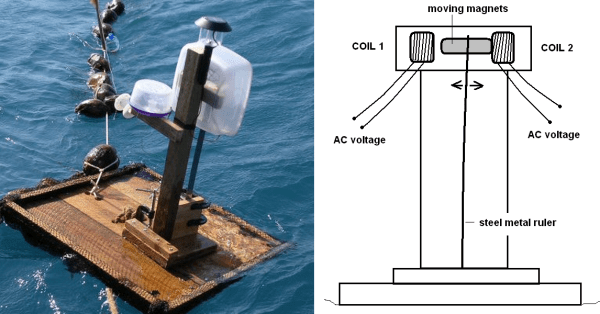
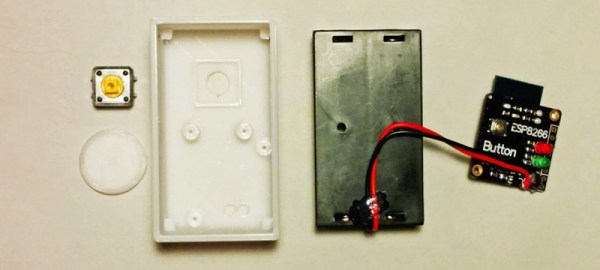
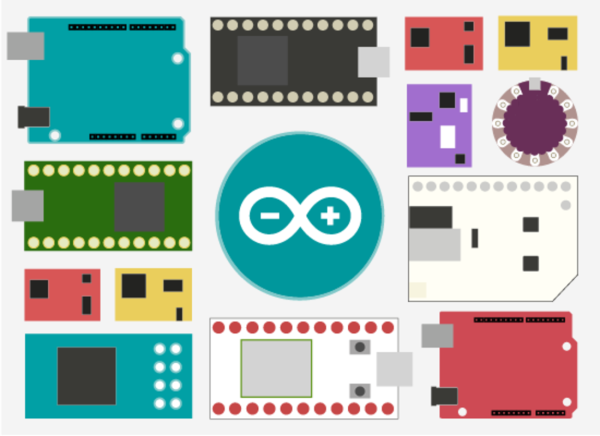
 But before that, it’s time to bid farewell to the cheeky little popup window that would deliver a warning message when using a board bearing the USB IDs of their former-partner-turned-competitor. We absolutely
But before that, it’s time to bid farewell to the cheeky little popup window that would deliver a warning message when using a board bearing the USB IDs of their former-partner-turned-competitor. We absolutely 
 The projector itself is the HD25-LV, a 3500 Lumen model from Optima. the HD25-LV is capable of 1080p, though in this situation, brightness is much more important than resolution. [Mikeasaurus] mounted the projector along with a gel cell battery and 900 watt DC to AC inverter to power it. A mobile WiFi hotspot fills out the rooftop kit. Leaving an expensive setup like that on top of a car is a recipe for disaster – be it from rain, rocks, or theft. [Mikeasaurus] thought ahead and strapped his setup down inside a roof mounted cargo box. A plastic covered hole in the front of the box allows the projector to shoot down on the road while protecting its lens. We’d want to add a vent and fan to ensure that projector gets a bit of airflow as well.
The projector itself is the HD25-LV, a 3500 Lumen model from Optima. the HD25-LV is capable of 1080p, though in this situation, brightness is much more important than resolution. [Mikeasaurus] mounted the projector along with a gel cell battery and 900 watt DC to AC inverter to power it. A mobile WiFi hotspot fills out the rooftop kit. Leaving an expensive setup like that on top of a car is a recipe for disaster – be it from rain, rocks, or theft. [Mikeasaurus] thought ahead and strapped his setup down inside a roof mounted cargo box. A plastic covered hole in the front of the box allows the projector to shoot down on the road while protecting its lens. We’d want to add a vent and fan to ensure that projector gets a bit of airflow as well.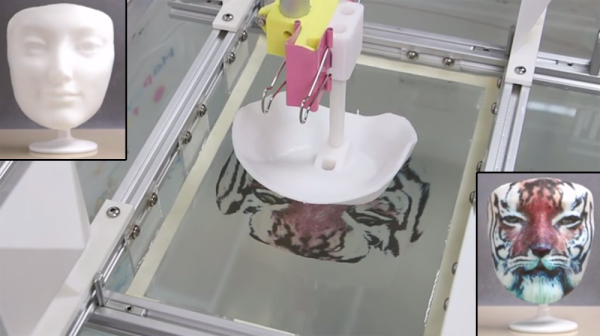
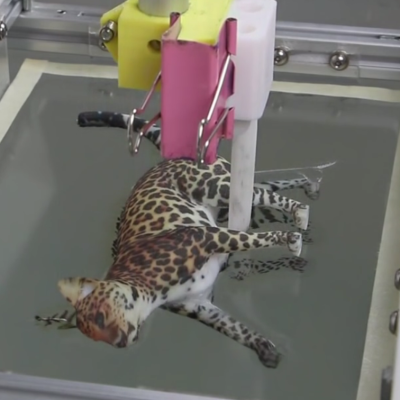 The physical setup for this hack is fairly simple: a vat of water, a linear motor attached to a gripper, and a Kinect. The object is attached to the gripper. The Kinect measures its location and orientation. This data is applied to a 3D-scan of the object along with the desired texture map to be printed onto it. A program creates a virtual simulation of the printing process, outputting a specific pattern onto the film that accounts for the warping inherent to the process. The pattern is then printed onto the film using an ordinary inkjet printer.
The physical setup for this hack is fairly simple: a vat of water, a linear motor attached to a gripper, and a Kinect. The object is attached to the gripper. The Kinect measures its location and orientation. This data is applied to a 3D-scan of the object along with the desired texture map to be printed onto it. A program creates a virtual simulation of the printing process, outputting a specific pattern onto the film that accounts for the warping inherent to the process. The pattern is then printed onto the film using an ordinary inkjet printer.










